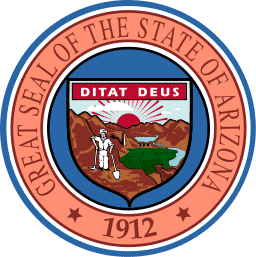…
There are about 20 massage therapy schools in Arizona that state officials recognize. Many of them are in the Phoenix and Tucson metropolitan areas, with others in smaller cities such as Flagstaff, Sedona, Prescott, and Yuma.
The schools operate either independently or on large college campuses. Depending upon the institution, students may earn either a professional certificate or an associate in applied science degree.
No work experience or on-the-job training, other than that provided in school, is required to practice in the state. The job prospects in this rapidly expanding field are better in Arizona than the national average.
Arizona isn’t the only state with a great selection of massage therapy schools, click here to view schools in other states.

This is a five-member panel consisting of three massage therapists and two lay persons. It certifies that massage therapy schools meet accreditation and curriculum requirements, licenses and regulates practitioners, enforces laws and regulations, and investigates complaints. The goal is to ensure the health and safety of massage therapy services in the state.
To win board approval, a school must be accredited by an organization that either the U.S. Department of Education or the Arizona State Board for Private Postsecondary Education recognizes. Officials may waive this requirement if a school offers its programs through a joint technical education district.
To become a massage therapist in this state, you generally must first earn a high school diploma. However, it is possible to begin professional training during your senior year at the Western Maricopa Education Center in suburban Phoenix. The program entails a competitive admissions process.
A student must receive 700 hours of instruction at an approved massage therapy school. The state board mandates that the following be included in the curriculum: body structure and function, ethics and other professional standards, theoretical knowledge and practical skills, and practical experience.
Beyond the core coursework, individual schools develop their own curricula. Some of them design classes for students seeking to serve certain populations, like seniors. Others provide training in specialized massage therapies and techniques. For instance, there may be specializations in aromatherapy, Tai Chi, or the mind-body connection.
Some students obtain more than 1,000 hours of instruction and training, which can give them more career choices and higher salaries. Financial aid may be available. Those who graduate from a school not recognized by Arizona’s board must pass an exam administered by either the Federation of State Massage Therapy Boards or the National Certification Board for Therapeutic Massage & Bodywork.
The final steps are to pass a certification exam and apply for a license to practice in the state. Among the licensure requirements are the proper education and experience, a criminal background check, fingerprints, and proof of U.S. citizenship.
We selected the schools below based on the programs that they offer, accreditation, student population, graduation rate and reputation.
View our Ranking Methodology to learn more about how we rank schools.

90%
206
Campuses in Tucson, Prescott, Flagstaff, and Mesa host an 800-hour program in massage therapy that takes full-time students 26 weeks to complete. Part-timers attend evening and weekend classes for 12 months.
The coursework covers Swedish massage, chiropractic assistant training, neuromuscular therapy, sports massage, craniosacral, connective tissue therapy, shiatsu, hydrotherapy, integrative massage, and polarity therapy. Students also work in a clinic to gain hands-on experience and learn the skills they need to meet licensure regulations.
Financial aid, scholarships, and individual payment plans are available.
76%
273
This school offers multiple massage therapy programs, which take as little as seven and a half months to complete. There are campuses in Phoenix, Scottsdale, and Tucson. The curriculum includes an internship at a public clinic.
Students automatically belong to the Associated Bodywork & Massage Professionals (ABMP), the largest such organization in the country. The membership includes free liability insurance. The school touts its professional development and job-placement services. Thousands of employers have hired Cortiva graduates. Some of them reimburse students’ tuition.
84%
269
A small school in a medium-size city, Carrington provides a 35-credit-hour program that takes about seven months to finish. Graduates receive certificates of achievement.
The classes are Anatomy and Physiology; Terminology; Functions and Structures of the Body’s Muscular, Skeletal, and Internal Systems; and Ethical, Legal, and Business Concerns. The final requirement is completing an externship to attain practical experience. Students also attend a career development seminar.
45%
535
The 35-week program here features a curriculum that focuses on bodywork and financial skills.
Students take anatomy and physiology classes that teach movement, postural alignment, and structural dysfunction. They learn about massage techniques in classrooms and labs, and also study business and marketing. The program’s last component is an externship to give students experience in a real-world setting using massage tables, massage chairs, and hot stones.
The school offers flexible morning and evening class schedules, financial aid, individual tutoring, and job-placement assistance. New class sessions begin every five weeks.
53%
488
Located in Phoenix, GateWay awards certificates in massage therapy. The program consists of 700 hours of study, which take eight months to complete.
The curriculum stresses structural massage, which the school describes as “the ability to couple and apply a deep understanding of anatomy with powerful tissue sculpting techniques to create radical change in the body.” Students learn how to use their hands, fingers, forearms, knuckles, fists, and elbows in administering Swedish, deep-tissue, Asian, sports, and pregnancy massages. There are business classes, as well.
32%
988
This award-winning school in the Phoenix suburb of Tempe was founded more than 25 years ago. It has four degree programs that award diplomas: Professional Massage Practitioner, 750 hours of study that take 11 months; Master Massage Practitioner, 1,000 hours for 14 months; Master Massage With a Specialty in Aesthetics, 1,000 hours for 14 months; and Professional Massage Practitioner, 1,000 hours for 24 months.
In addition to core courses, the curriculum covers aromatherapy, baby touch, breast health, canine massage, cranial unwinding, deep-tissue massage, fibromyalgia therapy, medical massage, myotherapy, polarity, reflexology, reiki, yoga, hypnotherapy, nutrition, and natural aesthetics.
21%
5405
A community college with campuses in the Phoenix area, CAC offers an associate’s degree and a certificate program in massage therapy.
To earn a certificate, students must complete 39-43 semester hours (735 contact hours). Classes include Relaxation Massage, Therapeutic Massage, Massage Therapy for Special Populations, Spa Treatments, Hydrotherapy, Physiotherapy, Body Mechanics, Acupuncture, Anatomy, Pathophysiology, Business Skills, and Complementary and Alternative Medicine. The program includes chiropractic assistant certification.
To qualify for an associate’s degree, students take the same courses plus general education and expanded medical classes.
22%
7557
Located in Yuma, this school has a pair of programs: an occupational certificate and an associate’s degree.
All students take classes in active and passive joint movement techniques, as well as modalities including Swedish, deep-tissue, sports, pregnancy, and other specialized massage methods. Among the additional required courses for those seeking AAS degrees are English composition, mathematics, arts and humanities, social and behavioral science, and physical and biological science.
16%
11428
Students may pursue either an associate’s degree or a certificate. To be eligible for the 61- to 68-credit-hour degree program, they must have 15 prerequisite credits in anatomy and physiology, healthcare delivery, medical terminology, alternative medicine, introduction to massage therapy. These are the courses in the certificate curriculum.
AAS enrollees also are required to take general education classes in composition, oral communication, official reading, mathematics, humanities and fine arts, social and behavioral sciences, and natural sciences. There are four tracks: general, hands-on, 12 massage specialities, and physical activity.
All students get experience in the school’s Massage Practice Center.
24%
14906
This large public college, in the Phoenix suburb of the same name, is one of more than a dozen postsecondary schools in the greater Phoenix area that offer therapeutic massage programs. CGC is one of the oldest, with a history dating to 1985.
To earn an associate’s degree in massage therapy, students receive 750 hours of instruction and training in classrooms and at an on-campus clinic. They select from among four types of degrees, depending upon their specialization.
$20
$40,700
29%
The highest earners here make more than $82,500 annually or nearly $40 per hour, better than the national average of more than $77,000 and about $37.
The median pay is over $40,700 a year or almost $20 per hour in Arizona, somewhat higher than just under $40,000 and a bit more than $19 nationwide. The lowest earners receive nearly $21,000 (about $10 hourly) in the state, compared with $20,300-plus (about $9.80 per hour) nationally.
Arizona is one of the 12 states with the most massage therapists. The Phoenix-Mesa-Scottsdale region ranks among the top 10 metropolitan areas in terms of employment in the field. Officials predicted that the number of positions would increase from 3,130 in 2016 to 4,030 in 2026. That would be a 29 percent growth rate, faster than the national average of 26 percent.
Sources: U.S. Bureau of Labor Statistics, CareerOneStop

LIMITED TIME DEAL